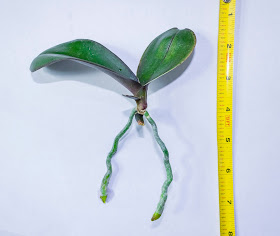That's his menacing face
Frustrated with my inability to protect my orchids from my cat, I decided on a more drastic change that would permanently keep my flowers out of harm's reach. Over Thanksgiving break, I ordered a 24 by 18 by 36-inch terrarium off Amazon.
The package arrived earlier this week. Its width is exactly right for it to fit into the bottom area of my growth shelves, but it is just a few inches too tall. To fix that discrepancy, I purchased 4 planks of wood (at horribly extortionate Manhattan prices) which I used to prop up the growth shelves.
Orchid grow area set-up
Between the wood props, and the removed connector shelves, the entire setup is a little unsteady. Fortunately, the terrarium fits well into the space, and I don't expect it to get jostled very much.
I arranged the orchids back into the terrarium. The terrarium's 3 feet of height left enough space for even the tall spike on my Psychopsis Mendenhall. A few of the orchids didn't fit inside the enclosure, but since they're not in spike, they should be safe from the cat anyway. Anything with growing buds is now closed off behind glass.
Spikes!
I'll probably rearrange the orchids in the terrarium. For one, I would like to try and take better advantage of the vertical space. I am also considering adding a fan to boost the air circulation. For now the top of the terrarium is open, which should provide some air movement. I guess I'll find out over time if it's enough.








































